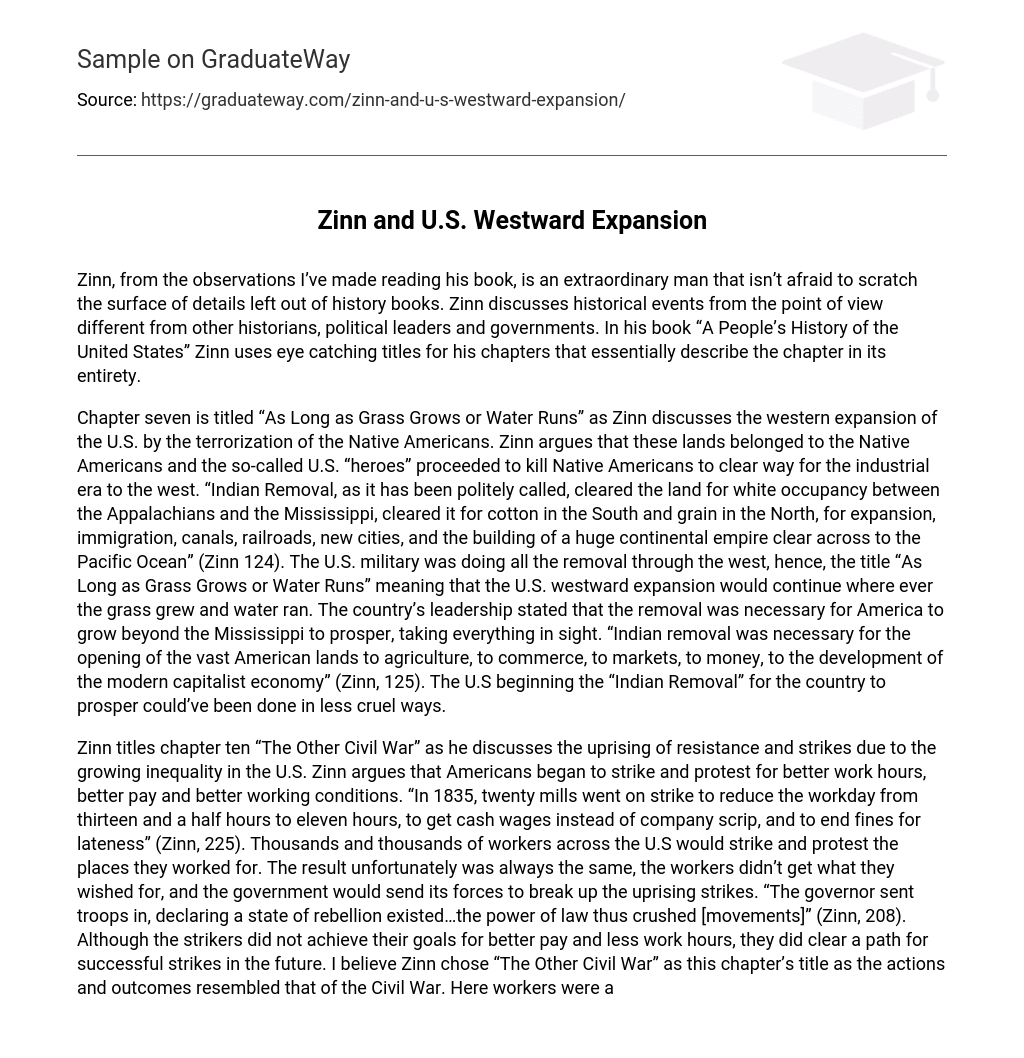Zinn, from the observations I’ve made reading his book, is an extraordinary man that isn’t afraid to scratch the surface of details left out of history books. Zinn discusses historical events from the point of view different from other historians, political leaders and governments. In his book “A People’s History of the United States” Zinn uses eye catching titles for his chapters that essentially describe the chapter in its entirety.
Chapter seven is titled “As Long as Grass Grows or Water Runs” as Zinn discusses the western expansion of the U.S. by the terrorization of the Native Americans. Zinn argues that these lands belonged to the Native Americans and the so-called U.S. “heroes” proceeded to kill Native Americans to clear way for the industrial era to the west. “Indian Removal, as it has been politely called, cleared the land for white occupancy between the Appalachians and the Mississippi, cleared it for cotton in the South and grain in the North, for expansion, immigration, canals, railroads, new cities, and the building of a huge continental empire clear across to the Pacific Ocean” (Zinn 124). The U.S. military was doing all the removal through the west, hence, the title “As Long as Grass Grows or Water Runs” meaning that the U.S. westward expansion would continue where ever the grass grew and water ran. The country’s leadership stated that the removal was necessary for America to grow beyond the Mississippi to prosper, taking everything in sight. “Indian removal was necessary for the opening of the vast American lands to agriculture, to commerce, to markets, to money, to the development of the modern capitalist economy” (Zinn, 125). The U.S beginning the “Indian Removal” for the country to prosper could’ve been done in less cruel ways.
Zinn titles chapter ten “The Other Civil War” as he discusses the uprising of resistance and strikes due to the growing inequality in the U.S. Zinn argues that Americans began to strike and protest for better work hours, better pay and better working conditions. “In 1835, twenty mills went on strike to reduce the workday from thirteen and a half hours to eleven hours, to get cash wages instead of company scrip, and to end fines for lateness” (Zinn, 225). Thousands and thousands of workers across the U.S would strike and protest the places they worked for. The result unfortunately was always the same, the workers didn’t get what they wished for, and the government would send its forces to break up the uprising strikes. “The governor sent troops in, declaring a state of rebellion existed…the power of law thus crushed [movements]” (Zinn, 208). Although the strikers did not achieve their goals for better pay and less work hours, they did clear a path for successful strikes in the future. I believe Zinn chose “The Other Civil War” as this chapter’s title as the actions and outcomes resembled that of the Civil War. Here workers were against the workforce due to growing inequality. Some strikes did have their death counts, and many were imprisoned as troops did anything in their power to break it up. Not giving up eventually led to better working conditions, better pay and less working hours.





